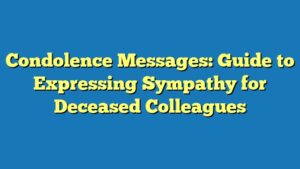Eid al-Adha wishes are greetings and best wishes exchanged during the Muslim festival of Eid al-Adha. Messages typically convey joy, peace, and celebration, such as “Wishing you a blessed and joyous Eid.” These well wishes hold great significance, emphasizing unity, goodwill, and the sharing of blessings.
The practice of exchanging Eid al-Adha wishes has been observed for centuries, with roots in the religious and cultural traditions of Muslims worldwide. It serves as a means to spread happiness and strengthen bonds within the community. Historically, the advent of social media and messaging apps has further amplified the reach of these wishes.
This article will explore the various forms of Eid al-Adha wishes, their significance in Muslim culture, and the role they play in fostering unity and joy during the festive season.
Eid al-Adha Wishes Messages
Eid al-Adha wishes messages hold great significance in Muslim culture, fostering unity and joy during the festive season. These messages encapsulate various essential aspects:
- Expression of Joy: Messages convey happiness and gratitude for the blessings of Eid.
- Sharing of Blessings: Well wishes spread good fortune and prayers for others’ well-being.
- Unity and Community: Exchanging messages strengthens bonds among family and friends.
- Cultural Tradition: The practice of sending Eid wishes is deeply rooted in Muslim tradition.
- Religious Significance: Messages often reflect the spiritual essence of Eid, emphasizing gratitude and devotion.
- Platform for Connection: Social media and messaging apps facilitate the widespread sharing of Eid wishes.
- Diverse Languages: Messages are exchanged in various languages, reflecting the global reach of the Muslim community.
- Creative Expression: Some messages incorporate unique designs, calligraphy, or personal touches, adding a creative element.
These aspects collectively highlight the importance of Eid al-Adha wishes messages in Muslim culture. They not only convey festive greetings but also contribute to strengthening community ties, fostering a sense of unity, and expressing the religious significance of Eid.
Expression of Joy
The expression of joy is a fundamental aspect of Eid al-Adha wishes messages, greatly influencing their content and reception. These messages serve as a means to convey heartfelt happiness and gratitude for the blessings bestowed during the festival. By expressing joy, well-wishers not only celebrate the occasion but also share their positive emotions with others, spreading a sense of festivity and cheer.
Real-life examples of this expression of joy abound in Eid al-Adha wishes messages. Common phrases include “May this Eid bring you immense joy and blessings,” “Wishing you a joyous and fulfilling Eid al-Adha,” and “May the spirit of Eid fill your heart with happiness and gratitude.” These messages encapsulate the senders’ heartfelt feelings, conveying their well wishes for the recipients’ happiness and prosperity.
Understanding the connection between the expression of joy and Eid al-Adha wishes messages has several practical applications. For instance, it enables individuals to craft more meaningful and heartfelt messages that genuinely convey their festive sentiments. Additionally, it highlights the importance of spreading positivity and joy during Eid, contributing to the overall atmosphere of celebration and unity within Muslim communities.
Sharing of Blessings
The sharing of blessings is an integral component of Eid al-Adha wishes messages, reflecting the spirit of generosity and compassion that permeates the festival. Through these messages, well-wishers not only extend their greetings but also invoke blessings and prayers for the good fortune and well-being of others. This practice is rooted in the Islamic tradition of dua (supplication), where Muslims pray for themselves and others, seeking divine favor and blessings.
Real-life examples of this sharing of blessings abound in Eid al-Adha wishes messages. Common phrases include “May Allah bless you with happiness and prosperity,” “Wishing you a blessed and fulfilling Eid al-Adha,” and “May this Eid bring you and your loved ones joy and good health.” These messages encapsulate the senders’ sincere prayers and well wishes, reflecting their concern for the well-being of others.
Understanding the connection between the sharing of blessings and Eid al-Adha wishes messages has several practical applications. Firstly, it enables individuals to craft more meaningful and heartfelt messages that genuinely convey their well wishes and prayers for others’ well-being. Additionally, it highlights the importance of spreading positivity and blessings during Eid, fostering a sense of unity and compassion within Muslim communities.
In summary, the sharing of blessings is a fundamental aspect of Eid al-Adha wishes messages, reflecting the spirit of generosity and compassion that permeates the festival. By understanding this connection, individuals can craft more meaningful messages and contribute to the overall atmosphere of celebration and unity during Eid.
Unity and Community
In the context of Eid al-Adha wishes messages, the exchange of messages plays a crucial role in strengthening bonds among family and friends, solidifying the sense of unity and community during the festival. This practice serves as a means to connect with loved ones, convey well wishes, and foster a feeling of togetherness, regardless of physical distance.
The act of exchanging Eid al-Adha wishes messages signifies the importance of maintaining and nurturing relationships within the Muslim community. Through these messages, individuals express their care, support, and best wishes for one another, fostering a sense of belonging and shared celebration. Real-life examples include sending personalized messages to family members, friends, and neighbors, often accompanied by thoughtful greetings and prayers.
Understanding the connection between exchanging messages and strengthening unity has several practical applications. Firstly, it highlights the significance of staying connected with loved ones, especially during festive occasions. By actively reaching out and exchanging well wishes, individuals can bridge distances, strengthen bonds, and create a more meaningful and fulfilling Eid experience.
In summary, the exchange of Eid al-Adha wishes messages is a critical component of fostering unity and community among family and friends. Recognizing this connection enables individuals to appreciate the power of well wishes in reinforcing relationships and creating a stronger sense of togetherness during the festive season.
Cultural Tradition
The practice of sending Eid wishes is deeply intertwined with the cultural traditions of Muslims worldwide. This tradition has been passed down through generations and holds great significance within Muslim communities. Eid al-Adha wishes messages serve as a manifestation of this cultural practice, embodying the values and beliefs of Islam.
The sending of Eid wishes is considered an essential part of celebrating Eid al-Adha. It is a way for Muslims to express their joy and gratitude for the blessings of the festival. By exchanging well wishes, Muslims strengthen their bonds and foster a sense of unity and togetherness. The messages often include prayers for peace, happiness, and prosperity, reflecting the spirit of compassion and generosity that is central to Islam.
Practical applications of understanding this connection include the preservation and promotion of Muslim cultural traditions. By actively participating in the exchange of Eid wishes, individuals contribute to the continuation of this meaningful practice. Moreover, it highlights the importance of cultural heritage in shaping the identity and values of Muslim communities.
In summary, the cultural tradition of sending Eid wishes is a vital component of Eid al-Adha wishes messages, reflecting the deep-rooted customs and beliefs of Muslim communities. Recognizing this connection allows for a deeper appreciation of the significance and beauty of this practice.
Religious Significance
In the context of Eid al-Adha wishes messages, religious significance manifests as an integral aspect, profoundly shaping the content and intent of these messages. They serve as a means to express gratitude, devotion, and spiritual reflection during the festival.
- Gratitude for Divine Blessings: Eid wishes often convey heartfelt appreciation for the blessings bestowed by Allah during Eid al-Adha. Messages express thankfulness for good health, family, and the opportunity to celebrate the festival.
- Devotion and Submission: Many messages emphasize the spiritual dimension of Eid, invoking Allah’s name and acknowledging His divine power. Well-wishers express their devotion and submission to the Almighty, seeking His blessings and guidance.
- Reflection and Repentance: Eid al-Adha is a time for spiritual introspection and seeking forgiveness. Wishes may include prayers for repentance and purification, as well as aspirations for a renewed commitment to faith.
- Unity in Worship: Eid al-Adha is a festival that brings Muslims together in worship and celebration. Wishes often express a sense of unity and brotherhood, emphasizing the shared spiritual experience and common religious values.
Understanding the multifaceted religious significance embedded in Eid al-Adha wishes messages highlights their spiritual depth and importance within the Muslim community. They not only convey festive greetings but also serve as a reminder of the spiritual essence of the festival, fostering a sense of gratitude, devotion, and unity.
Platform for Connection
In the digital age, social media and messaging apps have emerged as powerful platforms for connection, enabling the widespread sharing of Eid wishes. This phenomenon has transformed the way Muslims communicate and celebrate during Eid al-Adha, fostering a sense of global unity and camaraderie.
- Seamless Communication: Social media platforms and messaging apps provide convenient and instant channels for Muslims to exchange Eid wishes, regardless of geographical distance. This seamless communication allows for real-time sharing of greetings, prayers, and well wishes.
- Cross-Border Connections: Social media breaks down physical boundaries, allowing Muslims from different countries and cultures to connect and exchange Eid wishes. This cross-border communication promotes a sense of global unity and strengthens the bonds of the Muslim community worldwide.
- Visual Storytelling: Social media platforms enable users to share visual content, such as photos and videos, to convey their Eid wishes in a more engaging and personalized way. Visual storytelling adds a creative dimension to Eid greetings, allowing users to showcase their festive celebrations and traditions.
- Community Building: Social media groups and online forums dedicated to Eid al-Adha provide a virtual space for Muslims to connect, share experiences, and extend their well wishes. These online communities foster a sense of belonging and support, particularly for those who are unable to celebrate Eid with their loved ones in person.
The widespread sharing of Eid wishes through social media and messaging apps has amplified the reach and impact of these messages, strengthening the bonds within the Muslim community and creating a truly global celebration of Eid al-Adha.
Diverse Languages
The diverse languages used in Eid al-Adha wishes messages serve as a reflection of the global reach of the Muslim community, showcasing the widespread celebration of this festival across different cultures and linguistic backgrounds.
This linguistic diversity is a testament to the worldwide presence of Muslims, who have carried their traditions and customs to every corner of the globe. Eid al-Adha wishes messages exchanged in languages such as Arabic, Urdu, Indonesian, Turkish, English, French, and many others, bridge cultural divides and foster a sense of unity and belonging among Muslims worldwide.
Understanding the connection between diverse languages and Eid al-Adha wishes messages has several practical applications. Firstly, it highlights the need for inclusive communication during Eid celebrations, ensuring that messages are accessible to all members of the diverse Muslim community. Additionally, it emphasizes the importance of cultural preservation and the celebration of linguistic diversity within Muslim societies.
In summary, the diverse languages used in Eid al-Adha wishes messages reflect the global reach and cultural richness of the Muslim community. Recognizing this diversity enables effective communication, promotes inclusivity, and contributes to the preservation of linguistic heritage during this festive occasion.
Creative Expression
In the realm of Eid al-Adha wishes messages, creative expression emerges as an integral element, infusing these messages with individuality, artistry, and emotional depth. The incorporation of unique designs, calligraphy, or personal touches transforms well wishes into heartfelt works of art, conveying the sender’s sentiments in a visually captivating and meaningful way.
This creative expression holds significant importance in enhancing the overall impact of Eid al-Adha wishes messages. By adding a personal touch, senders can express their creativity and make their messages more memorable and engaging. Whether it’s through intricate calligraphy, vibrant colors, or thoughtful imagery, each creative element adds a layer of sincerity and authenticity to the message.
Real-life examples of creative expression in Eid al-Adha wishes messages abound. Many individuals create personalized greeting cards adorned with intricate Islamic patterns or calligraphy. Others incorporate multimedia elements such as photos or videos to share their festive experiences and well wishes in a visually appealing manner.
Understanding the connection between creative expression and Eid al-Adha wishes messages has several practical applications. For instance, it encourages individuals to embrace their creativity and explore new ways to express their well wishes. Additionally, it highlights the importance of personalization in making messages more meaningful and reflective of the sender’s unique style.
In conclusion, the incorporation of creative expression in Eid al-Adha wishes messages adds a touch of artistry and individuality to the festive greetings. By embracing their creativity, senders can create messages that resonate deeply with the recipients, fostering a sense of joy, connection, and celebration.
Eid al-Adha Wishes Messages FAQs
This section provides answers to frequently asked questions (FAQs) about Eid al-Adha wishes messages, clarifying their significance, usage, and impact.
Question 1: What is the significance of Eid al-Adha wishes messages?
Eid al-Adha wishes messages are a way to convey joy, peace, and well wishes during the Muslim festival of Eid al-Adha, strengthening bonds within the community and expressing gratitude for blessings.
Question 2: What are common elements included in Eid al-Adha wishes messages?
Common elements include expressions of joy, prayers for well-being, and invocations of divine blessings, often accompanied by traditional greetings and festive imagery.
Question 3: How are Eid al-Adha wishes messages exchanged?
Messages are exchanged through various channels, including in-person greetings, phone calls, social media, and messaging apps, enabling Muslims worldwide to connect and celebrate.
Question 4: What is the impact of Eid al-Adha wishes messages on the community?
These messages foster a sense of unity and belonging, strengthen social ties, and promote the sharing of blessings and prayers, contributing to the overall festive atmosphere and spirit of Eid.
Question 5: How can I make my Eid al-Adha wishes messages more meaningful?
Personalize messages with heartfelt expressions, incorporate creative elements such as calligraphy or images, and offer specific prayers or well wishes tailored to the recipient.
Question 6: What are some creative ways to convey Eid al-Adha wishes?
Consider creating video messages, designing custom greeting cards, or organizing virtual gatherings to share well wishes and celebrate the festival.
These FAQs provide insights into the significance, usage, and impact of Eid al-Adha wishes messages. Understanding these aspects enables Muslims to effectively convey their well wishes and contribute to the joyous and meaningful celebration of Eid.
Moving forward, the next section will explore the cultural traditions and religious significance associated with Eid al-Adha, providing a deeper understanding of the festival’s spiritual and social dimensions.
Eid al-Adha Wishes Messages Tips
This section provides practical and thoughtful tips to enhance the expression of well wishes during Eid al-Adha. By following these suggestions, individuals can convey their heartfelt sentiments in a meaningful and impactful way.
Personalize your messages: Add a personal touch by including the recipient’s name and specific well wishes tailored to their circumstances.
Incorporate cultural elements: Infuse your messages with cultural traditions and symbols, such as traditional greetings or festive imagery, to connect with the recipient on a deeper level.
Be sincere and heartfelt: Express your genuine joy and well wishes. Avoid generic or impersonal messages to convey the true spirit of Eid.
Consider the language: Choose a language that is familiar to the recipient, ensuring effective communication and fostering a sense of inclusivity.
Explore creative expression: Add a creative touch to your messages through calligraphy, artwork, or multimedia elements to make them visually appealing and memorable.
Share blessings and prayers: Offer specific prayers or blessings for the recipient’s well-being, health, and happiness.
Use appropriate channels: Select the most suitable communication channel, whether it’s in-person, phone call, or social media, to effectively convey your well wishes.
Time your messages: Send your Eid wishes at an appropriate time, ensuring they are received and appreciated during the festive period.
By incorporating these tips, individuals can create well-crafted and meaningful Eid al-Adha wishes messages that genuinely convey their heartfelt sentiments, strengthen bonds, and spread the spirit of joy and celebration.
These tips set the stage for the concluding section of the article, which will explore the spiritual significance and ethical implications of Eid al-Adha. Understanding these aspects provides a well-rounded perspective on the festival’s deeper dimensions and its impact on the Muslim community.
Conclusion
This article has explored the multifaceted significance of Eid al-Adha wishes messages, examining their cultural traditions, religious underpinnings, and impact on the Muslim community.
Key points that emerged include:
- Eid al-Adha wishes messages serve as a means to convey joy, peace, and well wishes, strengthening bonds within the community and expressing gratitude for blessings.
- These messages are deeply rooted in Muslim cultural traditions and religious values, embodying the spirit of generosity, compassion, and unity.
- The widespread sharing of Eid al-Adha wishes messages through various channels, including social media and messaging apps, has amplified their reach and impact, fostering a sense of global unity and celebration.
In conclusion, Eid al-Adha wishes messages are not merely festive greetings but also reflections of the rich cultural heritage, spiritual essence, and communal spirit of the Muslim community. By understanding and appreciating their significance, individuals can contribute to the vibrant celebration of Eid and strengthen the bonds that unite the Muslim world.








Tips for Using "Template by Kevin Crafts" Comments for Meaningful Online Discussions